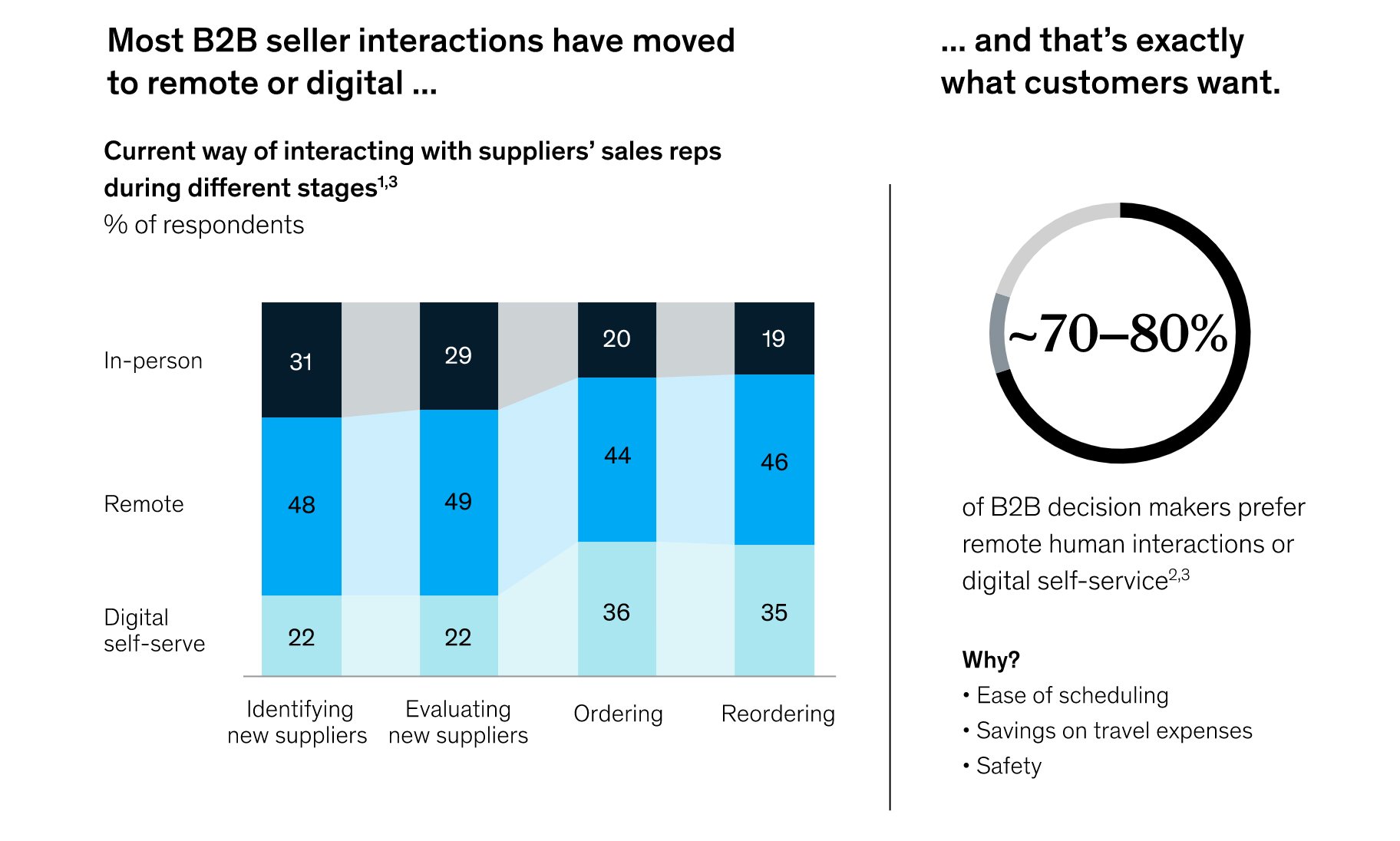While the year 2020 comes to an end, the changes it forced to the way business is conducted will continue to last for a longer time. Since the onset of Covid19 and subsequently the enforced lockdown, businesses have looked at newer ways of reaching out to potential prospects and closing business virtually.
This trend is visible not only in the B2C environment but has also seen a considerable increase in B2B sales as well. Enterprise customers are more willing to buy online today than pre-Covid times.
In conversations that we have been having with our customers, most customers are now looking for virtual meetings even in 2021 as organizations have slashed the travel budget and even their targeted prospects are comfortable meeting virtually.

A recent McKinsey survey presents a very interesting picture of the future sales strategies. 70-80 % of the B2B decision-makers now prefer remote interactions and self-service models compared to 40 % earlier. The same survey also highlighted that most business leaders would like to continue running the same model even after the vaccine is released.
What started as a response to the epidemic has now become the new normal of doing sales. Moving sales digital has forced organizations into the digitization of their sales and marketing function and forced adoption of technology.
The increase in digital adoption has also helped the sales functions to be more virtual, reduce spends on physical events, travel costs, increase their reach, and significantly improve sales effectiveness. While this presents a significant growth opportunity, this has also put tremendous pressure on the organizations to respond to these changes to move ahead of the competition.
The same survey also presented a very interesting picture of what sales leaders across the globe feel about the effectiveness of this new sales model. Sales leaders from India, United States, and Brazil felt that this new virtual sales model is much more effective compared to the rest of the countries.
The survey also points out that only 20–30% of B2B buyers are looking forward to interacting with sales representatives in person even in the post-COVID-19 model.
How can B2B Sellers Adapt to these trends
- Improve the transparency, speed, and expertise that you provide to your prospective buyers. The customers are looking for solutions and answers at a breakthrough speed.
- Fix your digital channels- Your digital channels are the first touch points now, ensure that your websites are fixed, without technical glitches and errors. The navigation is seamless and it is easy to find information on your website.
- Recreate your buyer decision-making journey map, so you can identify gaps and challenges that the potential prospects may face.
- Do not remove the human touch – While the buyer journey may happen online you should still ensure that the prospects have an option of speaking with a human to answer any queries, whether if it is the form of an inside sales rep or a technical support executive.
This new normal of sales brings a tremendous set of opportunities for the sales team. They have an opportunity to increase their reach, engage with a larger set of prospects as they save time traveling, and reduce the overall cost of selling.
On the contrary, this will reduce the personal touch that the sales reps used to have with their customers, the lack of informal dinners and lunches that used to help them build a strong bond will be missed, and most importantly as large events come to a halt, the opportunity to run into a target prospect and having an impromptu conversation will make the life of a B2B sales representative more difficult.
The dependency on marketing, website, online information about the company/product/services will become more relevant.


